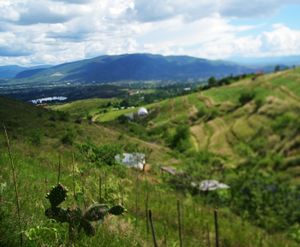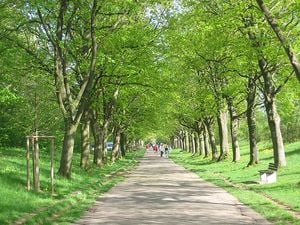
 Recognition from UN for Nepal’s tiger range restoration opens doors for technical and financial support, news.mongabay.com (Feb 15, 2024)
Recognition from UN for Nepal’s tiger range restoration opens doors for technical and financial support, news.mongabay.com (Feb 15, 2024)  Low-carbon milk to AI irrigation: tech startups powering Latin America’s green revolution, theguardian.com (Jan 30, 2024)
Low-carbon milk to AI irrigation: tech startups powering Latin America’s green revolution, theguardian.com (Jan 30, 2024)  Opportunities from a community-led strategy to save Brazil’s dry forests from desertification, news.mongabay.com (Dec 11, 2023)
Opportunities from a community-led strategy to save Brazil’s dry forests from desertification, news.mongabay.com (Dec 11, 2023)
Ecosystem restoration is the process of halting and overturning degradation, resulting in cleaner air and water, extreme weather mitigation, better human health, and recovered biodiversity, including improved pollination of plants. Restoration encompasses a wide continuum of practices, from reforestation to re-wetting peatlands and coral rehabilitation.[1]
Community action projects[edit | edit source]

 A love letter to a regenerative community, Ecosystem restoration camps (Sep 07, 2022) — Habiba = Love
A love letter to a regenerative community, Ecosystem restoration camps (Sep 07, 2022) — Habiba = Love
Ecosystem Restoration Camps is a global movement of people creating an abundant earth 🌲🌴🌳
"We repair broken ecosystems together and, in doing so, provide humanity with hope and a better future. Our big goal is to have one million people come together by 2030 and restore degraded ecosystems in 100 camps around the world."[2]
Events[edit | edit source]
 Mar 01, 2024 (Fri) — World Seagrass Day
Mar 01, 2024 (Fri) — World Seagrass Day Mar 03, 2024 (Sun) — World Wildlife Day
Mar 03, 2024 (Sun) — World Wildlife Day
- UN Decade on Ecosystem Restoration, 2021-2030
Resources[edit | edit source]
Video[edit | edit source]
Books[edit | edit source]
- Earth Repair: A Grassroots Guide to Healing Toxic and Damaged Landscapes, resilience.org, March 2015
Ecosytem restoration and climate emergency[edit | edit source]
Actions that prevent, halt and reverse degradation are necessary to meet the Paris Agreement target of keeping global temperature rise well below 2 degrees Celsius. Investments in agriculture, mangrove protection and water management will help adapt to climate change, with benefits around four times the original investment.
Ecosytem restoration and ecological emergency[edit | edit source]
Restoration, if combined with stopping further conversion of natural ecosystems, may help avoid 60 percent of expected biodiversity extinctions.
Ecosytem restoration and food security[edit | edit source]
Agroforestry alone has the potential to increase food security for 1.3 billion people.
Ecosytem restoration and SDGs[edit | edit source]
It contributes to the realization of multiple Sustainable Development Goals (SDGs), including health, clean water, and peace and security, and to the objectives of the three ‘Rio Conventions’ on Climate, Biodiversity, and Desertification. It can be highly efficient in producing multiple economic, social and ecological benefits concurrently.
Near you[edit | edit source]
The Kaipatiki Project, Auckland - Potawot forest restoration, California - Arcata Marsh saltwater marshes, California - Permaculture Demonstration Center in San Andres Huayapam, Mexico - Long Beach Greenbelt - Elephant Nature Park in Thailand - Pirque forest, Chile
local information can be found, or shared, via our many location pages
See also[edit | edit source]
- Environment quality activism
- Biodiversity
- Climate action
- Coasts
- Open spaces
- Reduce, reuse, repair and recycle
- Rural sustainability
- Trees, woodland and forest
- Urban sustainability
- Wetlands
- Mangrove swamps
- Bridging the social justice and environmental movements
- Environmental justice (category)
- Nigeria, Biological remediation
External links
References
- ↑ Press release, unep.org
- ↑ youtube.com
